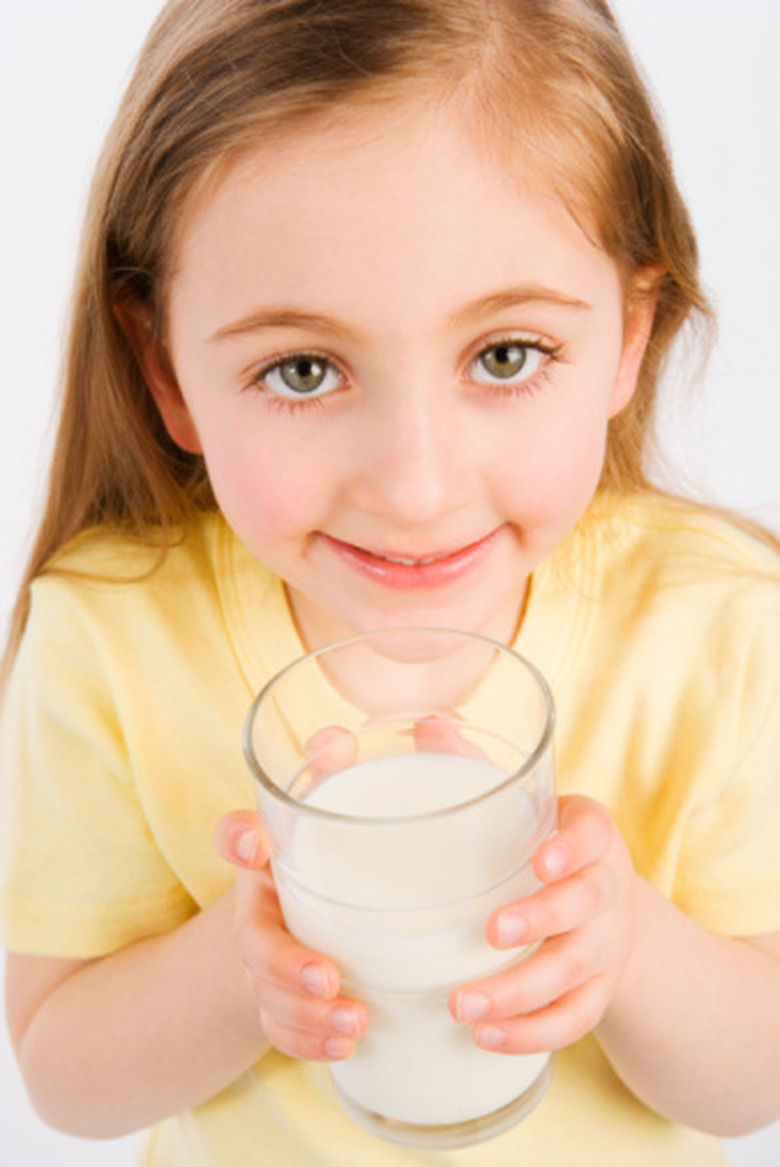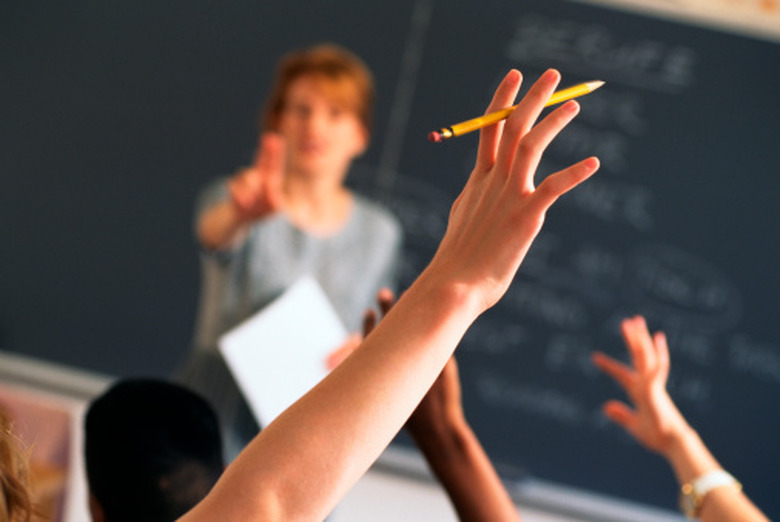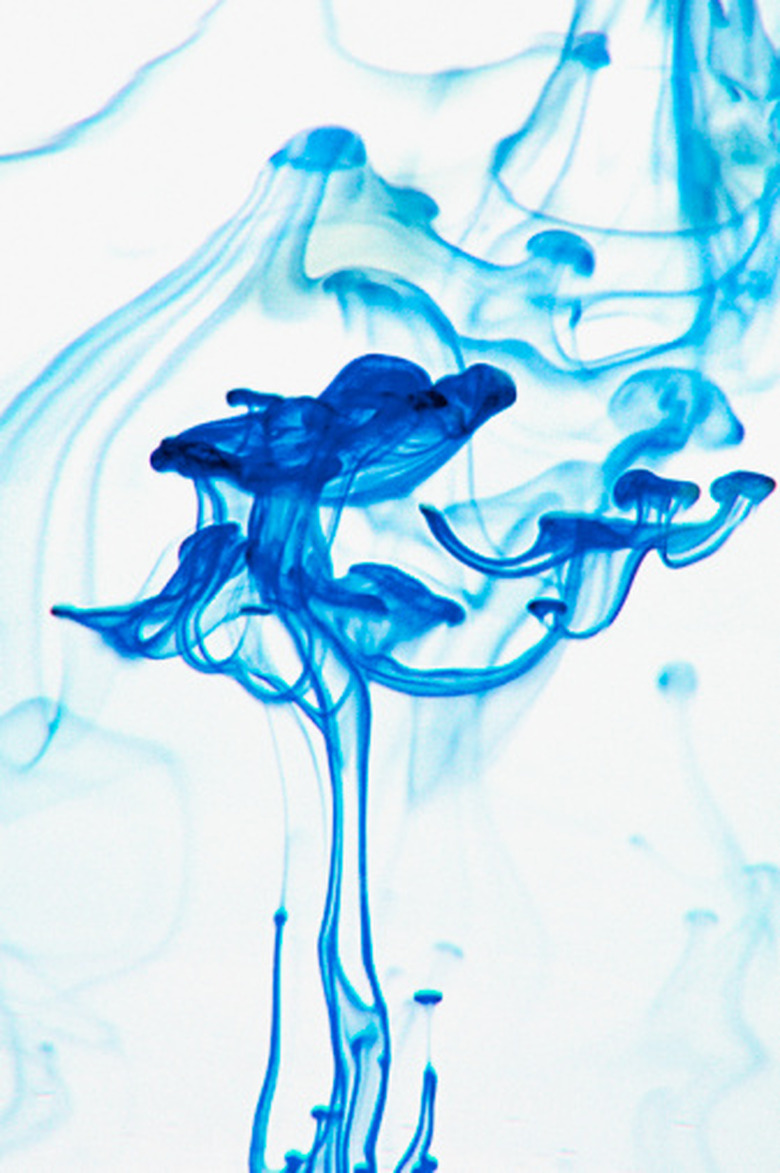How To Write A Hypothesis Of Magic Milk For 5th Grade
The "magic milk" experiment is a great way to introduce children to scientific experimentation, and also writing hypotheses. According to Steve Spangler's "Color Changing Milk," milk is a mixture of protein, fat and nutrients suspended in a mostly water solution. Food coloring, which dissipates in water, is held in place by the fat and protein in the milk. The fat and protein react to disruptions in the milk. The dish soap disrupts the chemical bonds that hold them in solution because it forms a bond with the fat. "The molecules of fat bend, roll, twist, and contort in all directions as the soap molecules race around to join up with the fat molecules." This activity pushes the colors around. Students should write a hypothesis about what the soap will do to the food coloring in the milk before they perform the experiment.
Step 1
Instruct students that a hypothesis is a statement that can be tested. According to Access Excellence, it should guess at "how two variables might be related," in a testable way.
Step 2
Define the variables in the experiment. Hypotheses are often formed from observations. It is helpful for students to observe how food coloring acts in water, milk and oil before they attempt to write a hypothesis. Teach them that soap bonds with oil and fat. This is how it cleans dirty dishes. The variables in this experiment are the soap and the food coloring.
Step 3
Identify which variable is the independent variable and which is the dependent variable. Access Excellence defines these as, "the independent variable is the one you, the 'scientist' control and the dependent variable is the one that you observe and/or measure the results." In this case, the soap is the independent variable and the food coloring is the dependent variable.
Step 4
Using the two variables, form an "if, then" statement. If I add soap to the milk, then the food coloring will mix with the milk. Students should make their best guess; hypotheses don't have to be correct, just testable.
Step 5
Perform the experiment as indicated in Steve Spangler's "Color Changing Milk," but only dip the cotton swab in the milk once or twice.
Step 6
Revise the hypothesis if you wish to give the experiment more depth. A more formal hypothesis thinks in terms of how the variables are related to each other. If soap can make food coloring mix with milk, then adding more soap to the milk in different places will cause the food coloring to mix with the milk faster.
Step 7
Repeat the experiment using a fresh batch of milk and food coloring. Use multiple cotton swabs and stick them in different places.
Things Needed
- Pen
- Paper
- Water
- Milk
- Oil
- Food coloring
- Deep dinner plate or bowl
- Dish soap
- Cotton swabs
TL;DR (Too Long; Didn't Read)
This experiment can be furthered by expanding the medium being used. Try it with buttermilk or nonfat milk. Try using pepper instead of food coloring. Try it using a clean cotton swab or toothpick. Talk about surface tension.
Warning
Students should be warned that although food coloring is not toxic, dish soap can be. Do not drink milk that has soap in it.
References
Cite This Article
MLA
Brenna, Deborah. "How To Write A Hypothesis Of Magic Milk For 5th Grade" sciencing.com, https://www.sciencing.com/write-magic-milk-5th-grade-8416528/. 24 April 2017.
APA
Brenna, Deborah. (2017, April 24). How To Write A Hypothesis Of Magic Milk For 5th Grade. sciencing.com. Retrieved from https://www.sciencing.com/write-magic-milk-5th-grade-8416528/
Chicago
Brenna, Deborah. How To Write A Hypothesis Of Magic Milk For 5th Grade last modified March 24, 2022. https://www.sciencing.com/write-magic-milk-5th-grade-8416528/




